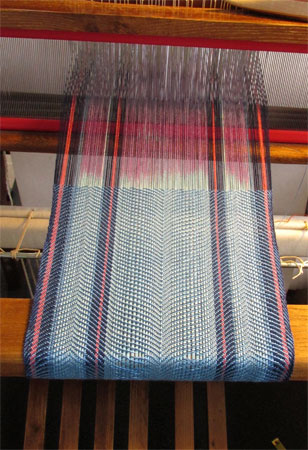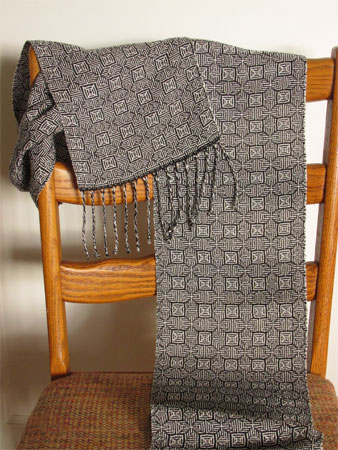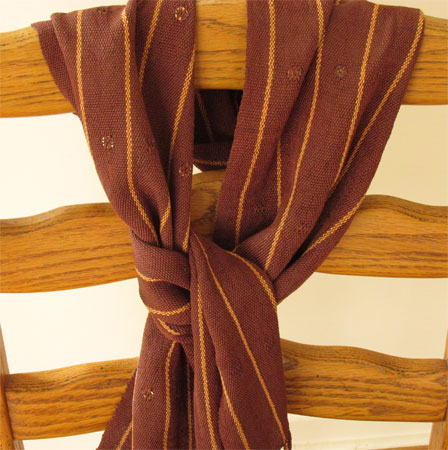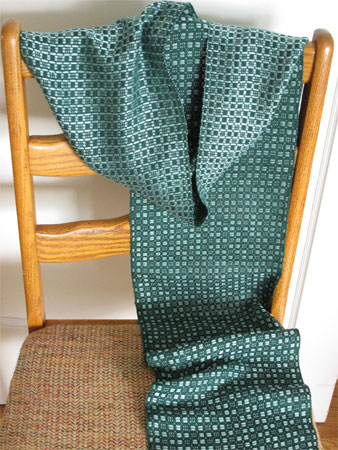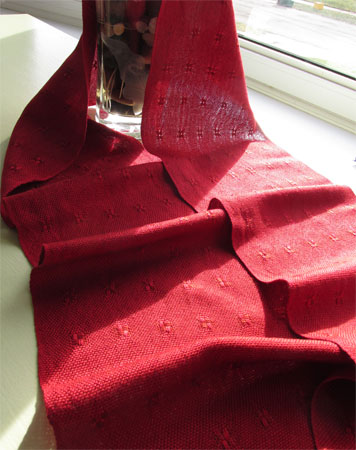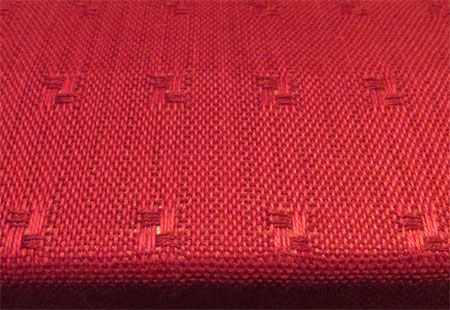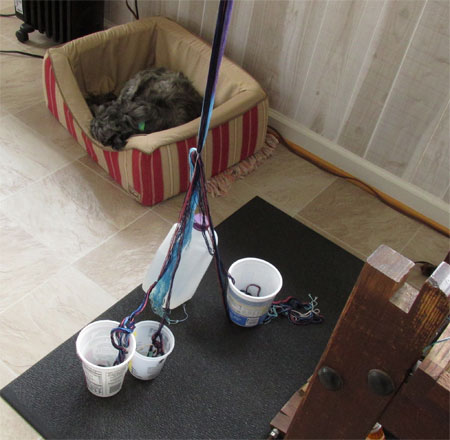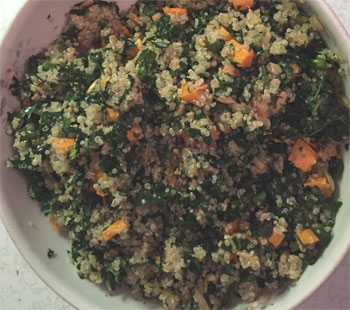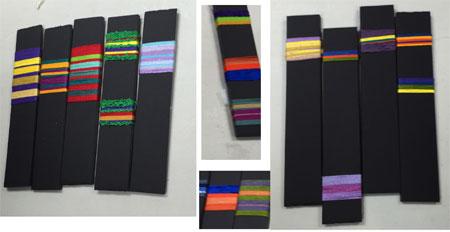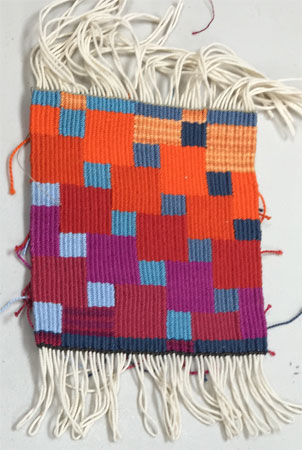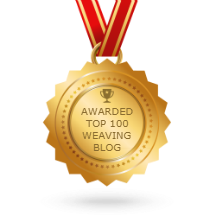After a somewhat lengthy break, I’m working on my next baby wrap warp. This one is for CT and TS. Instead of taking still shots of my bouts, I thought I’d try a different route this time, showing what is involved in measuring a warp, especially the gradient section. I tried my hand at another video, and although this is my third try, it was nowhere near as tricky as the last one, when I had to figure out how to suspend the tripod over my head.
Note that I mis-spoke in two places. First I said I was using 2 strands of lavender when it was actually magenta. Then I told you I had the incorrect number of threads…you’ll see me count to confirm that I have the number I need; clearly I couldn’t talk and count at the same time. Regardless, I think you’ll find it interesting to see the process. (SO WEIRD! When I preview I see the correct video. When I post I see the prior weaving with sequins video. I’m working on fixing that. Bear with me.)
It’s been a whole week since I last posted. In the meantime I went to a Weaver’s Guild meeting and saw a great presentation on art quilts by an AMAZING quilter, Pat Pauly. I also met with 2 other Guild members who are interested in exploring working toward a Certificate of Excellence with the Handweavers Guild of America. A daunting task, indeed, and I’m not sure if I’ll go all the way…it’s a B.I.G job…some people have spent many hours each week for years to prepare all the needed materials and samples! But I’m confident that no matter how far I proceed down that path, it will be worth it and I’ll learn things.
I went to Rochester’s First Friday, a monthly event focusing on art and artists. It was fun and interesting. I didn’t buy anything this month, but I did gather some business cards from people whose work intrigued or inspired me.
I spent more than 5 hours taking an online Defensive Driving course. I do this every 3 years to get a discount on my car insurance, and to remind me of things I need to pay attention to when I’m behind the wheel.
On the home front I also beamed and woven my next hand painted warp. I’ll show you more in the next post, when I have both this and the first wet finished and pressed. I’ll just tell you that as much as I didn’t like how the rayon warp looked or worked, I loved the silk warp twice as much. Now you’ll have to come back to see it!

